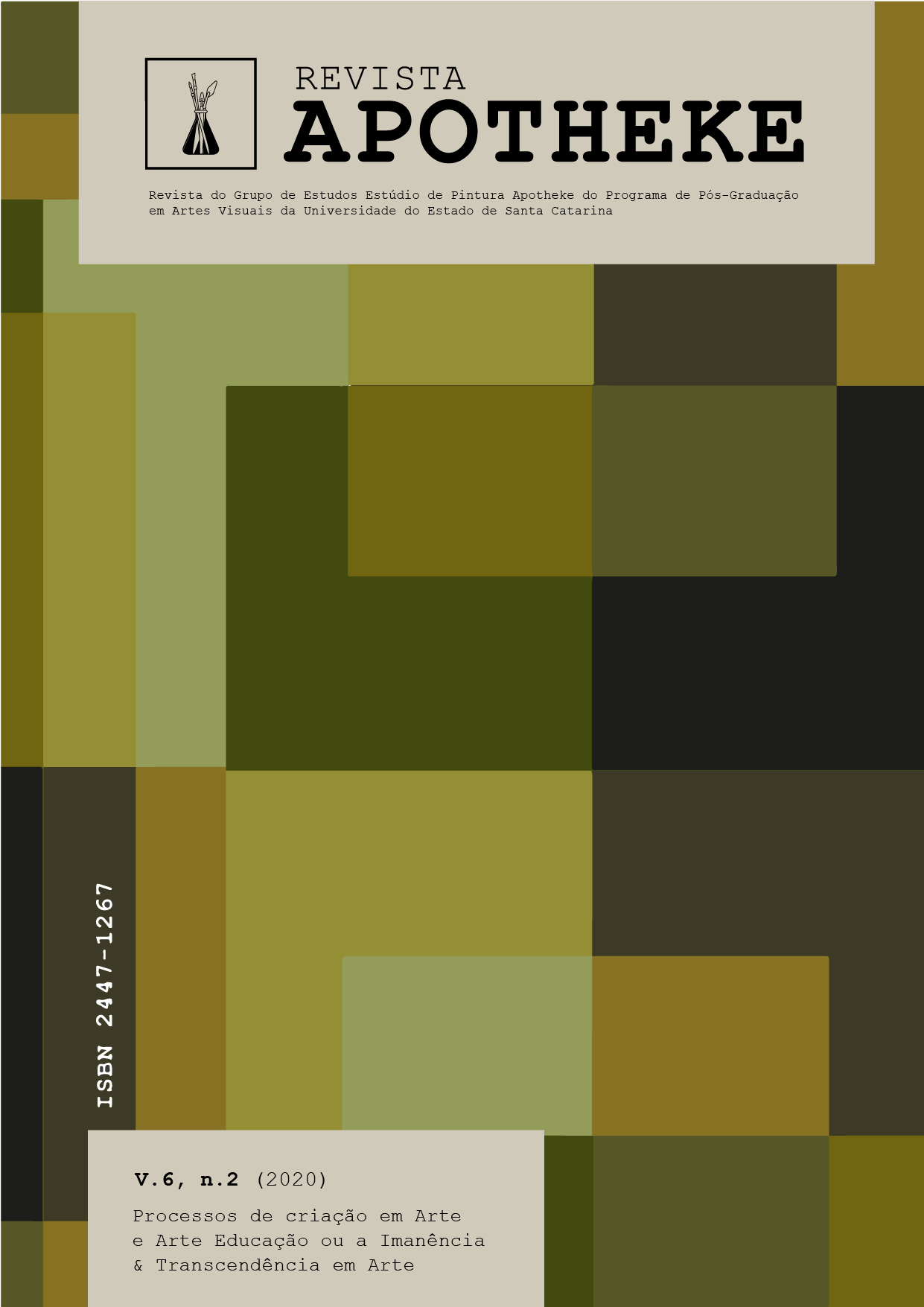Poetics, creative processes and the research journal of the painter in training
DOI:
https://doi.org/10.5965/24471267622020014Keywords:
painting , poetic , creative process, methodology , sketchbookAbstract
This article deals with what we consider to be poetics, clarifying the importance of understanding this concept in teaching and the methodology applied to practical studio subjects, in the Basic Cycle of UFRJ’s - Federal University of Rio de Janeiro - Painting Course, School of Fine Arts. This designation, which covers so many possible concepts in the artistic field, is fundamental in deepening the work of an aspiring research artist in painting. The artist is a person who thinks, proposes and transforms his culture and society through a language. That is why it is important to be aware of your poetic field, as it is what drives research, creative act and expression. The poetics that a painting student creates and develops works as the main catalyst for his production, guiding the creative process, imagination and expression. In addition to addressing this concept, we will present here the teaching methodology applied to the classes of second and third periods of the Painting course. This proposes, through the elaboration of a cluster of images and artist documents of the most varied types, the organization of creative thinking in research journals, also called sketchbooks. These supports are like receptacles that simultaneously promote learning, research and creation of students initiated in this complex, rich and ancestral language: painting.
Downloads
References
ALLOA, Emmanuel (org.). Pensar a Imagem. Belo Horizonte: Autêntica Editora, 2015.
DURAND, Gilbert. O Imaginário: ensaio acerca das ciências e da filosofia da imagem. Rio de Janeiro: DIFEL, 2004.
DURAND, Gilbert. Campos do Imaginário. Coleção Teoria das Artes e Literatura. Lisboa: Ellug, 1996.
FRIEDEL, Helmut. Gerhard Richter: Atlas. New York: D.A.P./Distributed Art Publishers, 2007.
JUNG,Carl G. (et.al). O Homem e seus símbolos. Rio de Janeiro: Harper Collins Brasil, 2016.
OSTROWER, Fayga. Criatividade e Processos de Criação. Petrópolis: Vozes, 2014.
Downloads
Published
How to Cite
Issue
Section
License
Copyright (c) 2020 REVISTA APOTHEKE

This work is licensed under a Creative Commons Attribution-NonCommercial 4.0 International License.
Copyright and Licensing Policy
Authors of works submitted to Revista APOTHEKE authorize their publication in both print and digital formats exclusively for academic purposes. Reproduction is permitted, provided that the source is properly cited. Authors confirm the originality, authorship, and unpublished status of their manuscripts.
Articles published by the journal are freely available and intended for academic and non-commercial use only. All copyrights are transferred to the journal. The content of signed articles reflects the views of their respective authors and not the official position of Revista Apotheke. The author(s) agree to always cite the following reference when republishing or referring to the content originally published in Revista Apotheke:
“This article was originally published by Revista Apotheke in volume (insert volume), number (insert number), year (insert year), and is available at: http://www.revistas.udesc.br/index.php/APOTHEKE/index”
It is the sole responsibility of the authors to obtain written permission for the use of any material protected by copyright law included in their articles. Revista Apotheke is not responsible for copyright infringements committed by contributors.
Authors retain copyright and grant the journal the right of first publication, with the work licensed under a Creative Commons Attribution-NonCommercial License (CC BY-NC):
-
Attribution (BY): Licensees are allowed to copy, distribute, display, perform, and create derivative works, provided that proper credit is given to the author or licensor, in the manner specified.
-
NonCommercial (NC): Licensees may use the material only for non-commercial purposes.
After publication, authors retain the rights to their work and may republish the text.



